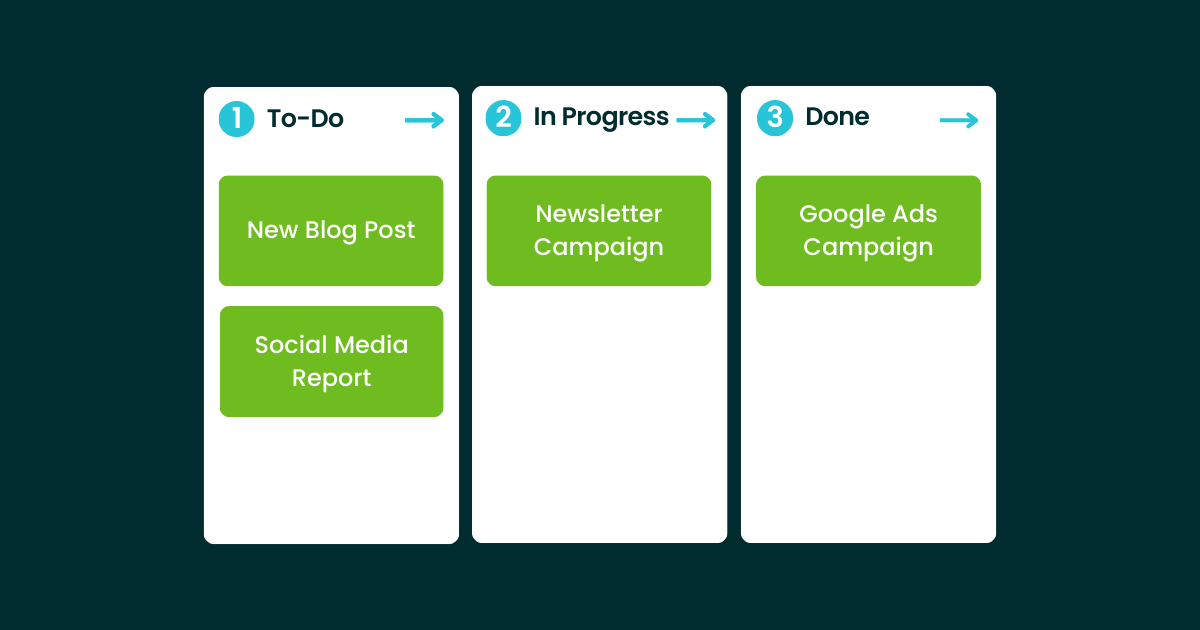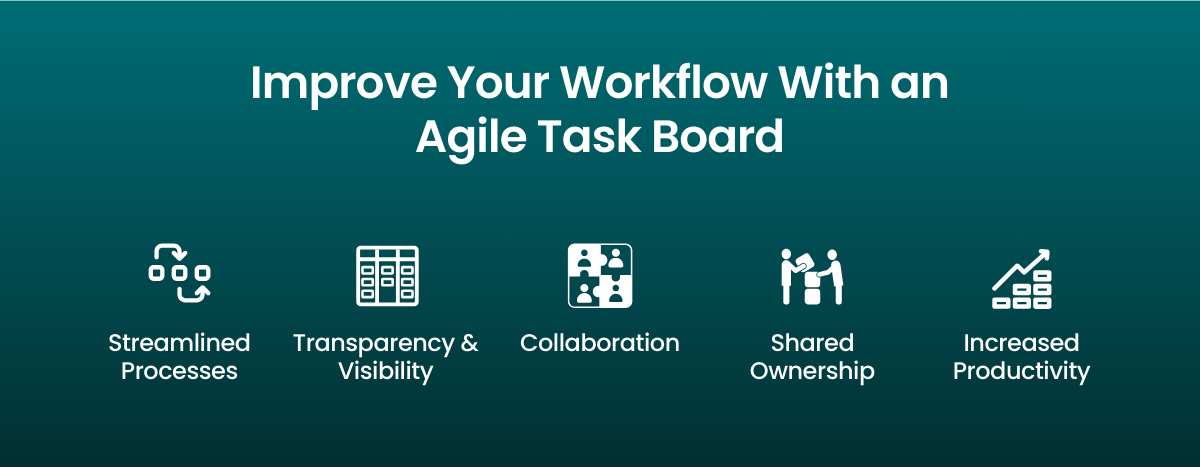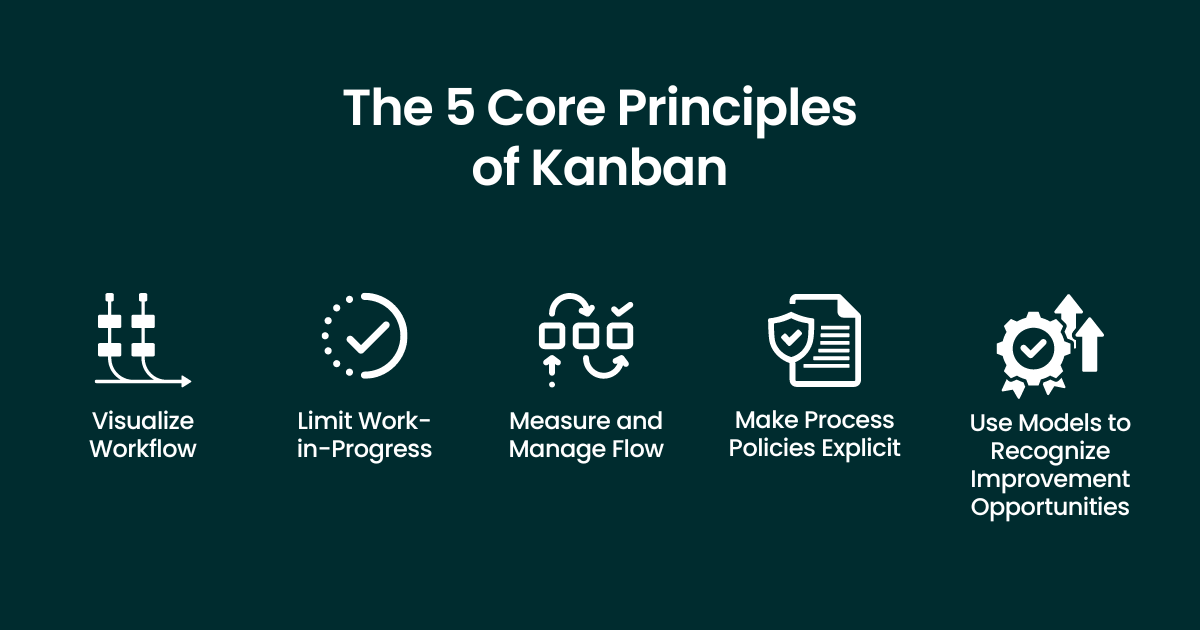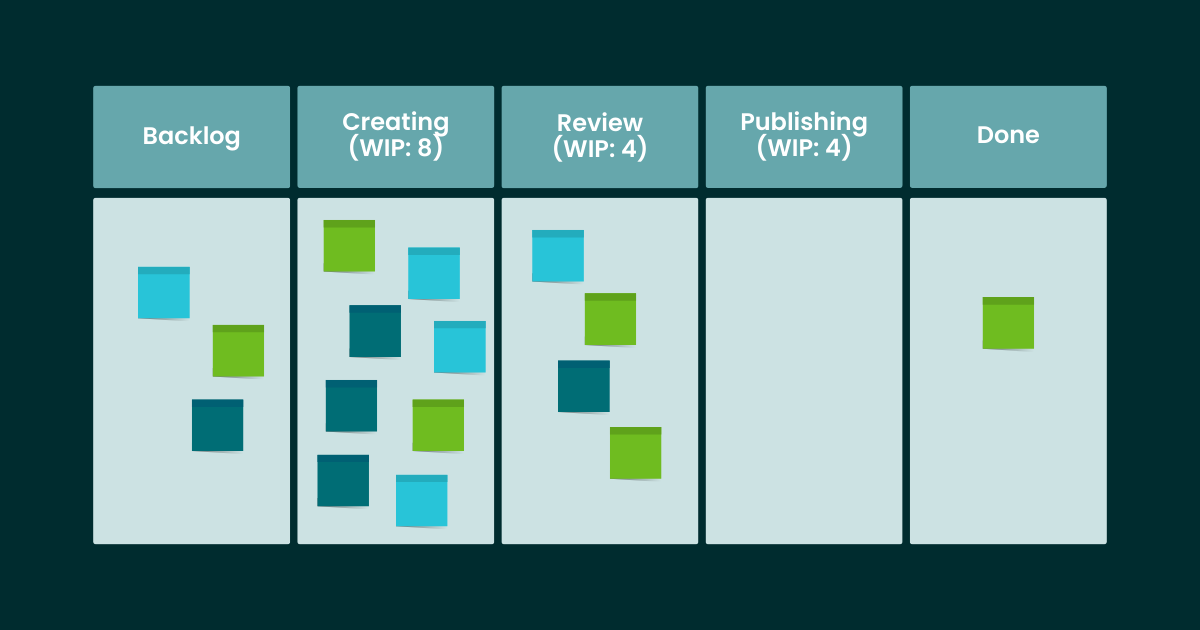Task management is one of those mundane elements of our work that’s easy to neglect in favor of flashier things like a shiny new piece of software. But whether we like to admit it or not, we are all living in a world defined by this fact:
If you can’t manage tasks effectively, you can’t be an effective marketer.
It’s what ensures we work on the right tasks, it’s what ensures we don’t work on unnecessary tasks, and it’s what helps us stay sane as we try and manage everything the world throws at us.
That’s why understanding task management and getting good at it will help you be more effective at everything you do. But task management is also never “complete.” You always need to be looking for ways to improve and stay on top of new challenges.
So it’s time to dive right in, really understand what task management is and how you can use it to be a more effective and efficient marketer.
Understanding Visualization Boards
The first place to start answering the question “what is task management?” is with visualization boards. If there’s a single thing you can do to improve how you manage your tasks, it’s to visualize them on a physical or digital board.
At the most basic level, a visualization board (AKA an Agile task board) is just a series of columns that represent stages of work. Cards representing tasks move across those columns to represent the stage of work that task is in.

You can go more complex, adding additional columns or even horizontal lanes to represent specific categories of work, but visualization boards work best when they are relatively simple. While these can be physical, they’re most often digital as this enables everyone (particularly people working remotely) to easily access and work from the same board in real time.
So why are these visualization boards so important for effective task management?

Virtually all the advice that we’re about to dive into about effective task management starts with visualizing your tasks. Essentially, if you can’t see what’s happening then you can’t manage it. Eventually, you can advance to using these boards for more strategic task management, but again, you want to start with the basics.
What Is Task Management?
Now that we have an understanding of how to visualize the work we do, let’s tackle the main question here: What is task management?
Task management is the process of monitoring and managing tasks through their entire lifecycle from backlog through to completion. The management side usually entails visualizing your tasks and using systems and processes to determine when you work on what.
Of course, this could mean everything from throwing darts at a physical task board (probably not effective but you can’t say it wouldn’t be fun to try) to deciding what to work on all the way to using advanced Agile processes.
Your fundamental approach to task management is going to vary based on how you structure your work, so let’s look at how basic task management functions in three common frameworks.
Task Management in Kanban
Kanban’s approach to task management is built on one basic principle: by limiting the work we do, we are more productive. Research has long shown that context switching is horrendous for our productivity, which is why Kanban’s approach to task management works so well.
You can boil this approach down to 5 main principles:

We’ve gone through 1 and 2 on this list, so what about 3? Kanban has us measure how work moves through our boards as a way to understand how our task management is functioning. Armed with this information, we can tackle principle 5 and find ways to improve our performance. Then once we land on something that works, we make that an explicit policy.
Task Management in Scrum
If Kanban is built around optimizing a continuous flow of tasks, Scrum is all about breaking work up into “sprints” lasting a few weeks. The cadence this structure provides helps individuals or teams be more conscious about what work they commit to, tracking what gets done, and testing new ideas for improvement.
Scrum is really built around a series of meetings. Sprints begin with sprint planning, where the team decides what work they can commit to during the sprint. Then, during the sprint, the team will generally hold daily standup meetings to share what is happening and help tackle any blockages a team member might be facing.
At the end of the sprint, teams will often hold a sprint review to show the work done to stakeholders and get feedback. Then a retrospective meeting will provide time to identify issues and brainstorm potential solutions.
In other words, Scrum’s approach to task management is all about identifying what tasks should/can be done in a sprint, optimizing to get them done, and reviewing how everything went to find areas to improve.
One important consideration when comparing Scrum and Kanban is how your tasks are assigned. Generally, you can’t add new tasks during a Scrum sprint, so if you have a stakeholder who wants you to drop everything to work on something new, you’re expected to tell them to wait until the next sprint. This limitation is one reason hybrid approaches are so popular.
Task Management in Hybrid Frameworks
Unsurprisingly, hybrid frameworks generally combine elements of Kanban and Scrum. For example, a team might work in sprints but without all of the structure that Scrum brings. There’s no single way to do this, which opens up opportunities to customize an approach to meet your specific task management needs.
This is in part why hybrid methods were the most popular choice for Agile marketers for 6 years. It was only in the 2024 State of Agile Marketing Report that hybrid approaches tied with Kanban and Scrum.
But this flexibility is also why there just isn’t a single approach to task management in hybrid frameworks. Instead, they allow you to pick and choose elements you like.
Speaking of the Annual State of Agile Marketing Report, why don't you take a second to get yourself a copy of the latest edition?
Other Concepts to Use in Your Task Management
Outside of the three frameworks we just mentioned, there are many task management tactics you can use to improve your effectiveness.
Prioritization
Kanban and Scrum are great but if you aren’t prioritizing the right work to begin with, they’re just not going to be very effective at task management. That’s because effective task management begins with a prioritized backlog.
This is a list of work that needs to be done organized by priority. But how do you decide what should go in the backlog and how to order it? This starts with understanding who your stakeholders are and what they need.
Once you have that information you can prioritize your tasks based on how effectively they will deliver value to those stakeholders. Then, once you’ve built that list, you can pull tasks from it continuously (under Kanban or Hybrid frameworks) or at the beginning of each sprint (under Scrum).
This is such an important start to effective task management because it’s what ensures you work on the right tasks.
Estimation
Perhaps the greatest Achilles heel of any task management strategy is estimation.
Why?
In short, we humans are just exceptionally bad at estimating how much time it will take to complete a task. When this happens, it makes task management far more difficult because we end up taking on too many tasks and ultimately not delivering them on time or with the attention they deserve.
One reason to consider working in sprints is that it gives you the opportunity to hone your estimation skills on a regular basis. But there are also activities you can use to do this. For example, planning poker gamifies estimation to ensure your teams improve their accuracy over time.
Armed with more accurate estimation, you can ensure that your teams have the right number of tasks to prevent burnout and optimize productivity at the same time.
Work In Progress (WIP) Limits
We mentioned earlier how Kanban is all about doing less work in order to do more work. It may sound counterintuitive, but limiting the amount of work we’re doing at any one time dramatically improves our ability to deliver value to stakeholders.
Consider this example, you have 10 identical tasks and you’ve managed to finish 50% of each individual task. Sure you’re halfway done but by not actually completing a single task you’ve delivered 0 value. By contrast, if you took the same effort and completed 100% of 5 tasks, you would have delivered far more value far faster for the same effort.

That’s the basic idea, though WIP limits also work by limiting costly context switching. Implementing WIP limits generally means limiting the number of tasks that are allowed into specific columns on a visualization board. For example, you may be allowed to work on a maximum of 3 tasks at any time. This can be done for individuals or entire teams and it’s best to experiment to figure out what limits work best for you.
Standups
It’s an iron rule of task management: no matter how well you plan things will always go wrong at some point. Even with all the techniques on this list, the world is just too unpredictable. This is where daily standups come in.
These are short (ideally less than 15 minutes) daily meetings where team members quickly state what they did yesterday, what they plan to do today, and whether they are struggling or blocked on any tasks.
This information builds alignment and presents an opportunity for the team to quickly jump in and help where needed to ensure work continues to flow. For example, you might ask a clarifying question, ask a colleague for help, or just flag a challenge you’re experiencing.
Metrics
At the end of the day, you can only really optimize your task management if you know how you’re doing. That’s why the foundation of all of the techniques on this list has to be metrics.
First, you estimate how much work your tasks will require. From this, you know how much work you’re taking on. If you ultimately aren’t able to finish everything on time, you may try to take on fewer tasks or impose WIP limits.
So try choosing a few marketing metrics that best reflect what’s important in your work. Then when you review how your task management is working during retrospectives, you can quantify where you are. From this point, when you experiment with new techniques like WIP limits, different columns on your visualization board, etc. you can quantify their impact and determine whether they should become permanent.
Just be sure to pay particular attention to cycle time, throughput, and velocity, as these are the most important metrics for task management.
Addressing Common Task Management Challenges
Now that you’re familiar with some powerful task management techniques, let’s look at some of the challenges you may encounter and what to do about them.
The first is when you’re simply blocked on a task. This is where you can raise the issue at your next standup to get help in resolving the issue. However, ideally, you can prevent such blockages to begin with by ensuring the card connected with that task has all the information you need to complete it. For example, by having a definition of done or acceptance criteria.
In other cases, you may end up with too many or too few tasks. This is where estimation, prioritization, and visualization boards all come together. If you complete all of your work and aren’t working in sprints, you can just grab the next card from the prioritized backlog.
If you’re working in sprints, then you will know that you can take on a greater workload next time. That said, effective task management shouldn’t be about working at 100% capacity because that’s a recipe for burnout. Instead, aim for around 70% and use that slack for emergencies or something like skill development.
For most other challenges like unrealistic deadlines, or unexpected work requests, structuring your work around one of the Agile frameworks mentioned above will help a lot. These empower teams to push back when stakeholders make requests, helping to align both sides around a system of work that delivers greater value without sacrificing the team’s health and sanity.
Master the Concepts Behind Better Task Management
Now that you’ve more than answered the basic “what is task management?” question, it’s time to hone the techniques that can really drive better performance. To do that, look no further than The Ropes, our custom learning platform with dozens of courses to help you master everything from Kanban basics to utilizing WIP limits.
Sign up and start exploring the quick 30-minute lessons and build a foundation for better task management.